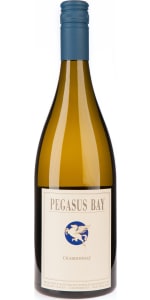VL
Description
The colour is lemon/straw. On the nose there are aromas of citrus, as well as honeydew melon and some stone fruit (peach and nectarine). In addition there is a hint of struck match which adds complexity and a flinty minerality. There are also some underlying savoury notes (toast and brioche) as a result of the secondary fermentation and lees contact in the barrel. The palate is concentrated, however the earlier picking has resulted in a wine that remains elegant and focussed, with refreshing acidity and a lingering finish.
Alcohol
13.0%
Analytical data
dry
Vineyard
The vineyard is located within the Waipara Valley of North Canterbury, on free draining, north facing terraces carved out of New Zealand’s Southern Alps by an ice-age glacier. It benefits from being in the lee of the Teviotdale Range, giving maximum protection from the Pacific’s easterly breezes and thus creating a unique mesoclimate. The vines are over 30 years old, with a large proportion planted on their own roots. The soil is free draining and of low fertility, resulting in naturally reduced vine vigour. This produces low yields of optimally ripened, high quality, flavourful grapes, which fully express the qualities of this unique terroir. The vineyard has warm days, but the nights are amongst the coolest in the Waipara Valley, drawing out the ripening period of the grapes, while still retaining good natural acidity.
Vinification
We use traditional Burgundian winemaking methods. The fruit was hand-picked in stages during early April and then the whole bunches gently pressed. The non-clarified juice was then put into large French oak barrels (puncheons), 70% of which were old in order to limit pickup of oak flavour. In these it underwent primary fermentation by the grapes indigenous yeasts. The wine was then matured in the puncheons on its natural deposits of yeast lees (sur lie). In the summer after harvest it started to go through spontaneous secondary (malolactic) fermentation. It was regularly tasted during this time and the fermentation was stopped when the ideal balance was obtained. It had approximately 12 months maturation prior to bottling.
Maturation
12 months


